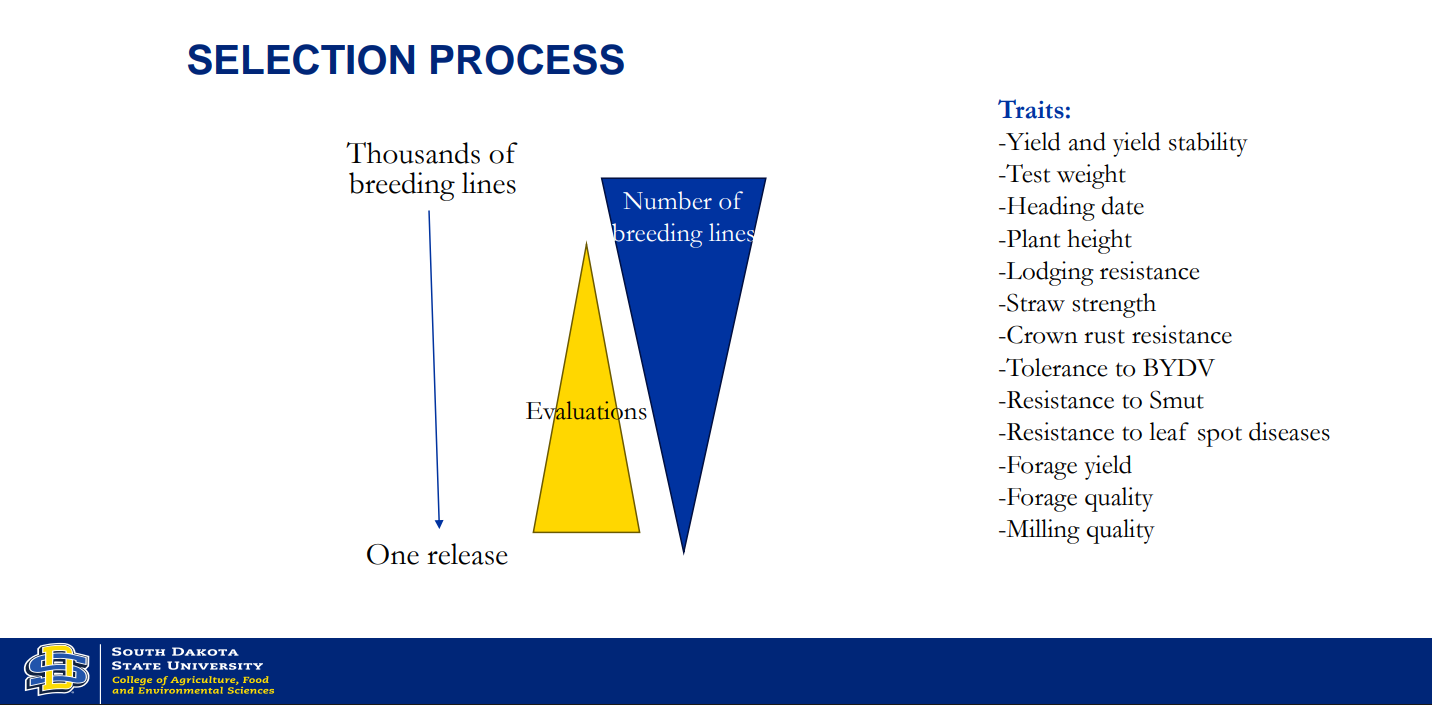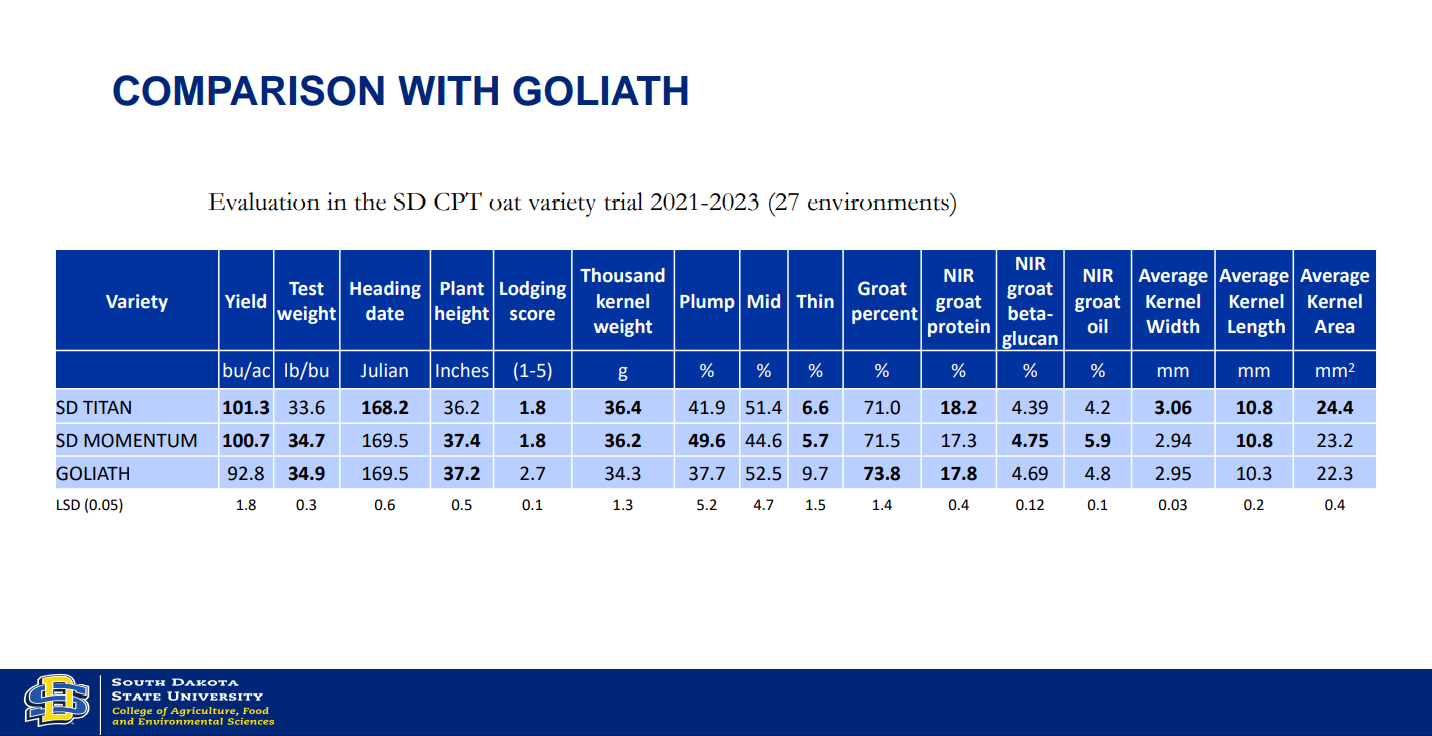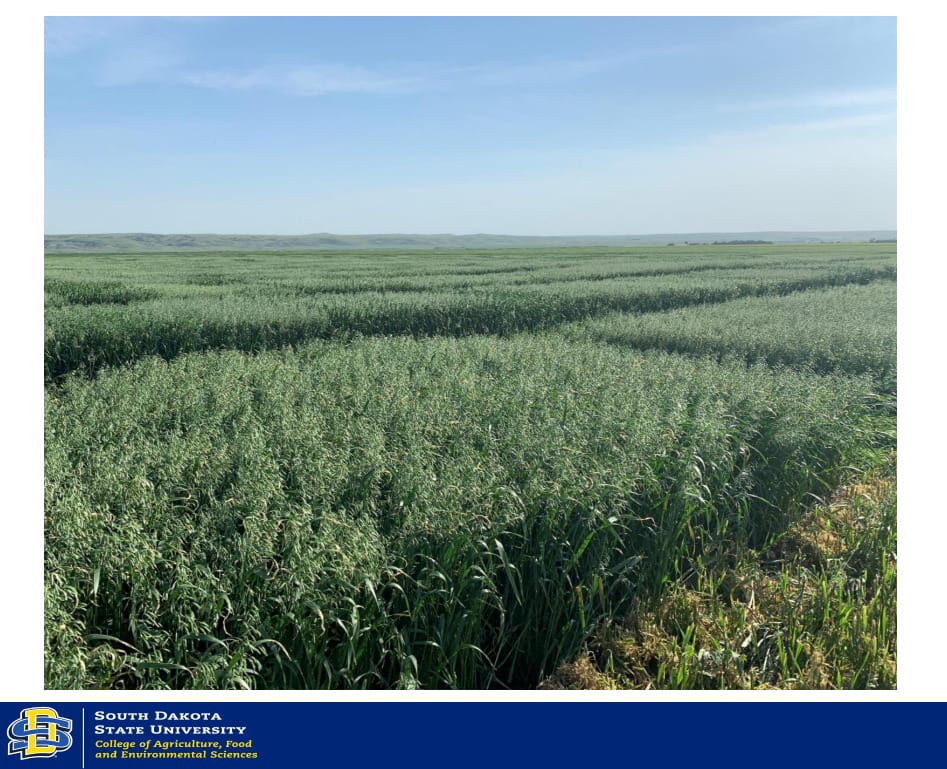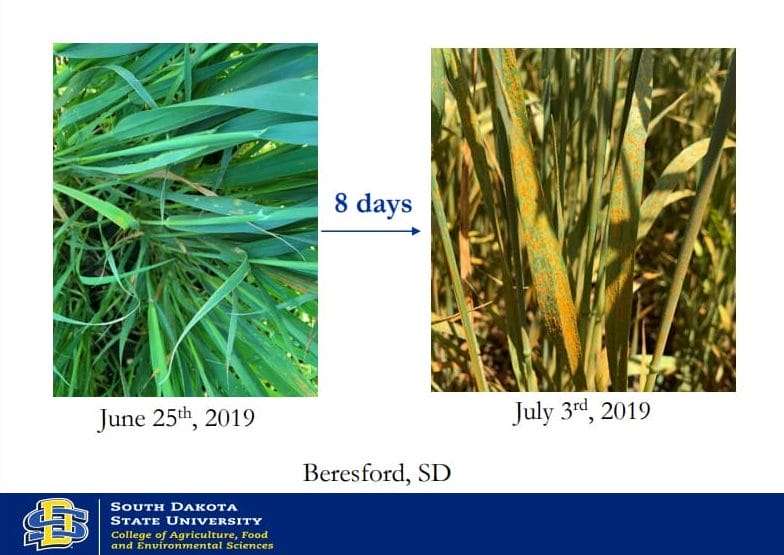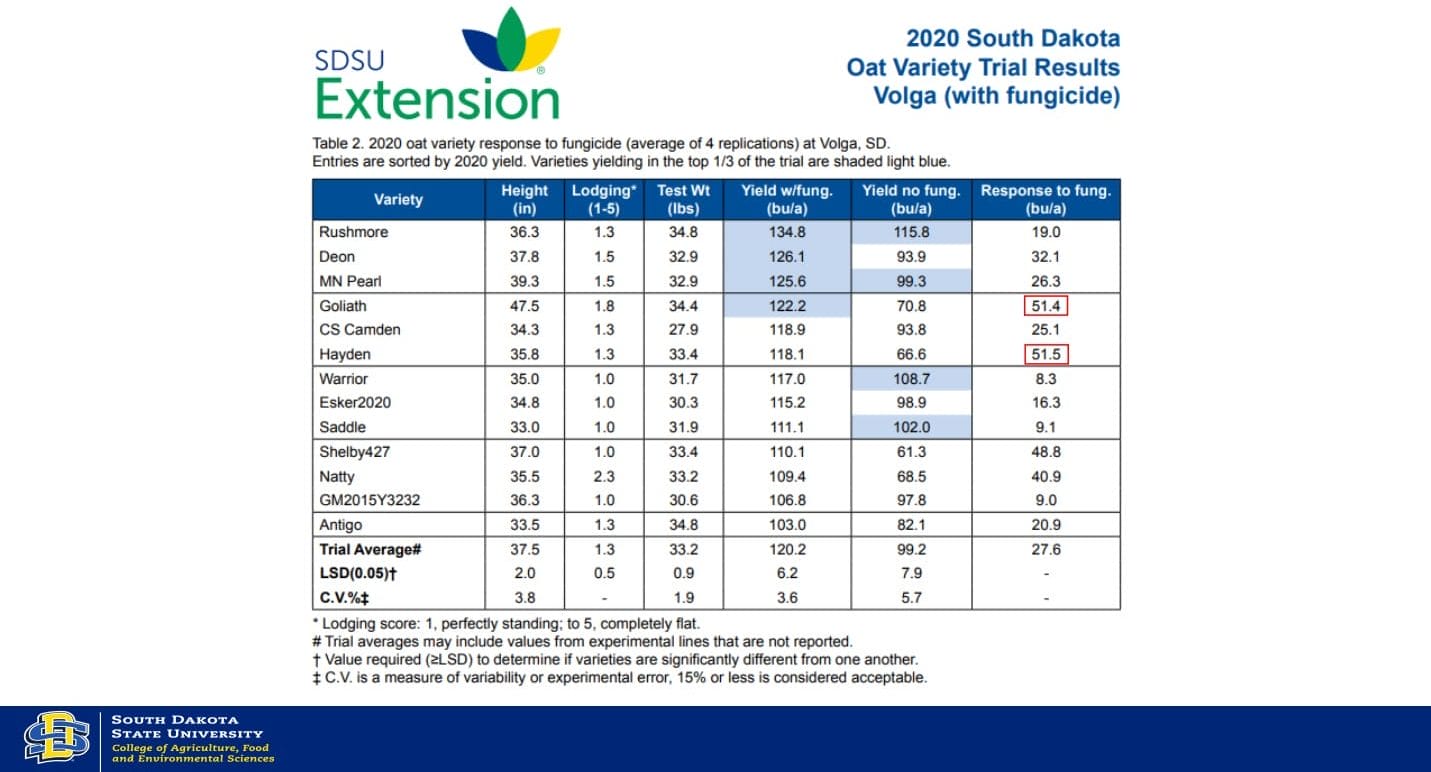Improving Resilience and Profitability Through Oat Breeding
Adding oats into a corn-soy rotation can help reduce pest pressure, lower inputs, spread out workload throughout the year and increase yield for all crops in the rotation. To obtain these benefits, farmers must find varieties that grow well in their region and meet their specific needs. That’s when oat breeding comes in handy!
Dr. Melanie Caffe, associate professor and leader of the oat breeding program at South Dakota State University, offered her insights related to oat variety development and selection in our February small grains shared learning call.
Breeding Process
During the call, Melanie highlighted that the primary goal for the oat breeding program at South Dakota State University is to develop oat varieties that will increase profitability and productivity.
To do so, they select to improve yield, yield stability, tolerance to stressors and pathogens, tolerance to disease, and lodging resistance. “We also want to make sure the grain that is produced is marketable, so we put a lot of emphasis on test weight and on making sure that the grain fits the milling quality,” Melanie says.
The process of breeding new oat varieties, from the initial crossing to having a variety ready to sell, can take about ten years. To speed up the process, the team at SDSU grows three generations of oats in greenhouses during the colder months.
Breeding lines are performance-tested in locations across South Dakota, the Midwest and into the Great Lakes region. Eventually, after years of research evaluating those lines based on a range of traits (see image below), one new variety is finally released.
Developing New Varieties
When she first started in her position at SDSU in 2014, Melanie was tasked with developing a new oat variety to replace the once favorable Goliath because it had become susceptible to crown rust and lodging and was no longer a top yielder.
In 2023, after years of breeding efforts, Melanie and her team released new varieties SD Momentum and SD Titan as alternatives to Goliath. As shown in the image below, both new releases yield significantly higher than Goliath and also show an improved lodging score. SD Momentum has the highest oil, beta-glucan (soluble fiber) and plump percentages while SD Titan contains higher amounts of protein and matures slightly faster.
Selecting the Best Variety
Oat varieties can have a dramatic impact on revenue. “I recommend looking at variety trials from where you are located,” Melanie says. “Many (midwestern) universities have variety trial results on their websites.”
Melanie asserts that it is important to find something with a maturity rate that works well in your area and be mindful of what varieties are better for milling or forage. Test weight, kernel size, groat percentage, percentage of plumps and thins, and content levels for protein, oil and beta-glucan (soluble fiber) all play into determining what the variety is best suited for.
For Milling
If oats are milled for grain, the average test weight should be high – 36 to 38 lbs/bu – and kernels should be plump. Food-grade oats need to be more nutritious, so generally have higher fiber, protein and oil levels.
The oats will also need to have good lodging resistance to be harvested effectively, but if harvesting and marketing straw, the variety should be tall. Melanie suggests, “Check with the milling industry if you know that you are going to sell to a certain company. They often have a recommended list, so it’s good to make sure the variety you are thinking of is on that list.”
For Forage
When selecting an oat variety for forage, find variety trial results specific to forage. Oat quality and lodging resistance may not be as important, depending on what type of feed you are hoping for. Crown rust resistance, however, is generally still important . A variety, such as SD Titan, that has a beta-glucan percentage below 4.5 is preferred for forage rather than food-grade production due to its low fiber content.
Evaluating Disease Resistance
Crown rust is a common concern for oat growers in the Midwest, especially when pressure is highest during mild, humid conditions. “It is a challenge for us to develop a variety with crown rust resistance,” Melanie says. “A lot of our releases (since 2009) were resistant to crown rust when they were released but have become susceptible over time.”
This trend has been taking place because buckthorn is an alternate host to crown rust, keeping the pathogen alive when oats are not growing in the fields. Fortunately, Melanie and her team are working to generate new resistant varieties.
Since varieties’ susceptibility can change over time, check recent ratings for crown rust susceptibility, which can usually be found alongside variety trial reports on university web pages. If unable to find a variety that is resistant to crown rust, Melanie asserts that fungicide really can make a huge difference in yield and should be applied during the flag leaf stage.
Additional Oat Variety Trial Resources
Check out oat variety trial reports from Practical Farmers of Iowa and various university studies:
SDSU Organic Oat Variety Trial 2023
UW-Madison Oat and Barley Performance Tests


